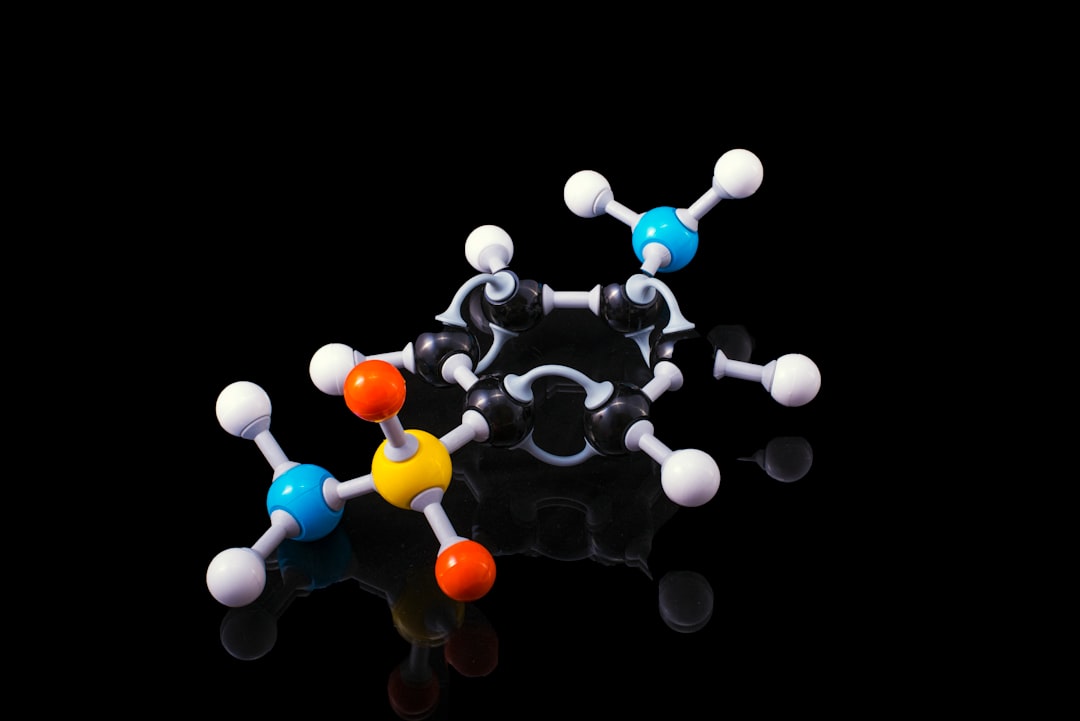What is it about?
This research focuses on tackling prostate cancer, a prevalent and challenging disease that affects many men worldwide. The study centers on a critical factor in prostate cancer development, a protein called Myc, and its partner protein, Max. Myc and Max team up and attach to specific DNA sequences, influencing the genes that drive cancer growth. Disrupting this partnership or their interaction with DNA holds promise as a potential cancer treatment strategy. To address this, researchers designed special peptides, pMyc and pMax, derived from Myc and Max protein sequences. They aimed to check if these peptides could specifically bind to the target DNA sequences, known as E-box sequences. The scientists employed a method called electrophoretic mobility shift assay (EMSA) to verify this interaction. Subsequently, they attached these peptides to gold nanoparticles (AuNPs) to create nanosystems (NSs). The study also investigated the safety and effectiveness of these nanosystems. The researchers examined their size, stability, and potential impact on blood cells. They also tested the nanosystems on different prostate cancer cell lines, including non-cancerous cells, to determine their impact on cell growth. The findings suggested that these nanosystems, containing the pMyc and pMax peptides, may hold promise for further research into treating prostate cancer driven by Myc. They showed specificity for the target DNA sequences and had little impact on blood cells. However, their effects on different prostate cancer cell lines varied, indicating that the specific genetic and molecular characteristics of each cell line play a significant role. [Some of the content on this page has been created by AI]
Featured Image

Photo by National Cancer Institute on Unsplash
Why is it important?
Prostate cancer is a major health concern, with a high incidence rate among men worldwide. This research is crucial because it focuses on a potential new approach to treating this challenging disease by targeting the Myc protein, which plays a significant role in prostate cancer development. Myc and its partner protein, Max, control the expression of genes that drive cancer growth. Disrupting their interaction with specific DNA sequences, known as E-box sequences, could represent a breakthrough in cancer treatment. This research aims to design specialized peptides, pMyc and pMax, that can bind specifically to these E-box sequences. The study also explores the use of gold nanoparticles (AuNPs) as carriers for these peptides. This approach can potentially enhance the delivery of therapeutic peptides to the nucleus of cancer cells, overcoming a significant challenge in cancer treatment. Furthermore, the research evaluates the safety and effectiveness of these nanosystems. It's vital to ensure that they are biocompatible and do not harm healthy cells. The study's findings suggest that these nanosystems may be well-tolerated by blood cells and non-cancerous cells, making them promising candidates for further research. Overall, this research provides valuable insights into a potential new avenue for treating prostate cancer by disrupting the Myc-Max interaction. The specific design of peptides and their delivery via nanoparticles offers a novel approach that could lead to more effective and targeted treatments for this disease, potentially improving the lives of countless individuals affected by prostate cancer.
Perspectives
in this paper, we have provided evidence of the design of novel peptides and nanosystems, their specificity to e-box sequences in EMSA assays, their physical characteristics, and a first approach of the biological effect (cytotoxicity) they exert on different prostate cancer cell lineages, and a cell line susceptible to bromodomain inhibitors (Vero - CCL-81), the bromodomain inhibition suppresses MYC gene expression. Interestingly, all the nanosystems and AuNPs possess similar physical characteristics, such as hydrodynamic diameter and zeta potential, yet they still have different biological effects on the different cells. These results suggest that the effect they have is by the peptides, pMyc and pMax peptides were derived from Myc and Max proteins, which have specific structures and interactions with other molecules, proteins, and DNA e-box sequences, the differential biological effects by cell linage was dependent of their specific molecular interactions, and cell linage genome. Each cell lineage assayed has a specific genome structure, regulation, and epigenome. We believe that this, as a first approach to our nanosystems and peptides, is enough to draw the interest of researchers worldwide and could provide real value to the field. Whereas we agree that this study has limitations such as the one pointed out in this comment, we are working on elucidating the exact mechanisms of these nanosystems. However, this excitant exploration field on signal pathway analysis may provide significant data results that need to be exposed and presented in another paper to present results and intensely discuss systematically. We appreciate the comments.
Sc.D. Hugo Gallardo Blanco
Universidad Autonoma de Nuevo Leon
Read the Original
This page is a summary of: Design and Characterization of pMyc/pMax Peptide-Coupled Gold Nanosystems for Targeting Myc in Prostate Cancer Cell Lines, Nanomaterials, October 2023, MDPI AG,
DOI: 10.3390/nano13202802.
You can read the full text:
Resources
Contributors
The following have contributed to this page










